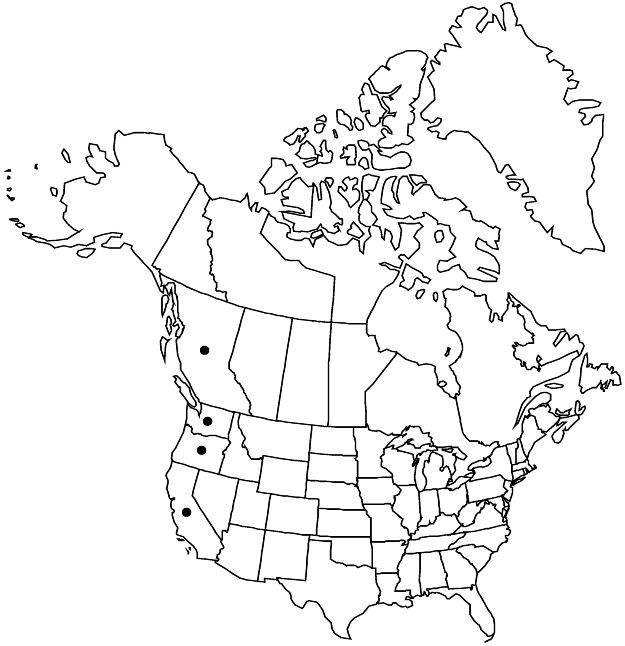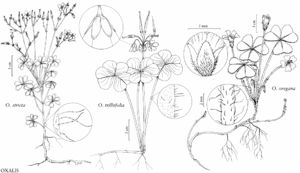Oxalis oregana
Fl. N. Amer. 1: 211. 1838.
Herbs perennial, acaulous, rhizomes present, fleshy-thickened, densely scaly, stolons absent, bulbs absent. Leaves basal, clustered at rhizome tips; petiole 5–15 (–21) cm, sparsely to densely villous, hairs rusty; leaflets 3, green, broadly obcordate, 10–30 (–40) mm, lobed 1/5–1/4 length, lobes apically convex, surfaces sparsely villous, oxalate deposits absent. Inflorescences 1-flowered; scapes (6–) 11–25 cm, glabrous or sparsely villous. Flowers heterostylous; sepal apices without tubercles; petals white to deep pink, usually with yellow spot sub-basally and prominent purple veins, (8–) 15–25 mm. Capsules ovoid, 6–8 (–12) mm, glabrate.
Phenology: Flowering Feb–Sep.
Habitat: Douglas fir, mixed fir, cedar-spruce, mixed conifer, and hemlock-maple forests, maple woodlands, alder glens, Gaultheria thickets, stream banks.
Elevation: 10–800(–1000) m.
Distribution

B.C., Calif., Oreg., Wash.
Discussion
Oxalis oregana has sometimes been treated as a disjunct geographical taxon of the European O. acetosella Linnaeus (see comments under 21. O. montana).
Selected References
None.
Lower Taxa
"alternating" is not a number."/5" is not declared as a valid unit of measurement for this property.
